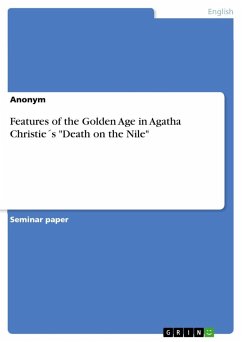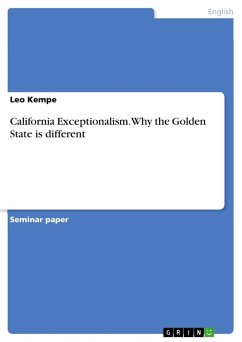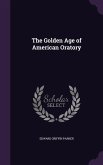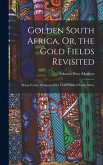Seminar paper from the year 2021 in the subject English Language and Literature Studies - Literature, grade: 1.7, University of Heidelberg, course: Introduction to Crime Fiction, language: English, abstract: The Golden Age is known as the time between the two world wars. During this time, many crime fiction novels were written by several authors. The Mysterious Affair at Styles 1920 by Agatha Christie is often seen as the first novel of the Golden Age crime fiction and In the Teeth of the Evidence 1939 by Dorothy L. Sayers as the last one. The novels often represent social problems, which sounds controversial to the ¿golden¿ notion. The crime fiction novels published in the Golden Age period have many common features which will be discussed in the following pages. The Golden Age features will be compared to Agatha Christie¿s novel Death on the Nile (1937). There is a lot of research about crime novels during that period but only a few compare the features of the Golden Age to Death on the Nile, which is why I chose this novel for further analysis. Being a huge fan of crime fiction, I wanted to take a closer look at Agatha Christie¿s writing style and see how it fits in the Golden Age period. One feature she followed is that murder becomes the main feature of the stories published in the Golden Age. By the 1920s words like ¿murder¿ or ¿death¿ began to be seen in the title (cf. Knight 2010: 86). Especially Agatha Christie¿s book titles let the readers know what the book will be about before reading the summary on the cover (e.g. Death on the Nile, Death in the Clouds, Mrs. McGinty's Dead, Murder on the Orient Express), along with authors like Dorothy L. Sayers with Murder Must Advertise, Margery Allingham with Death of a Ghost and Ngaio Marsh with Death on Ecstasy. These four British authors - Agatha Christie, Dorothy L. Sayers, Margery Allingham, and Ngaio Marsh - were known as ¿The Big Four¿ or ¿The British Quartet¿, but only Agatha Christie achieved the honour of being called the ¿Queen of Crime¿ (cf. Keitel 2008).








